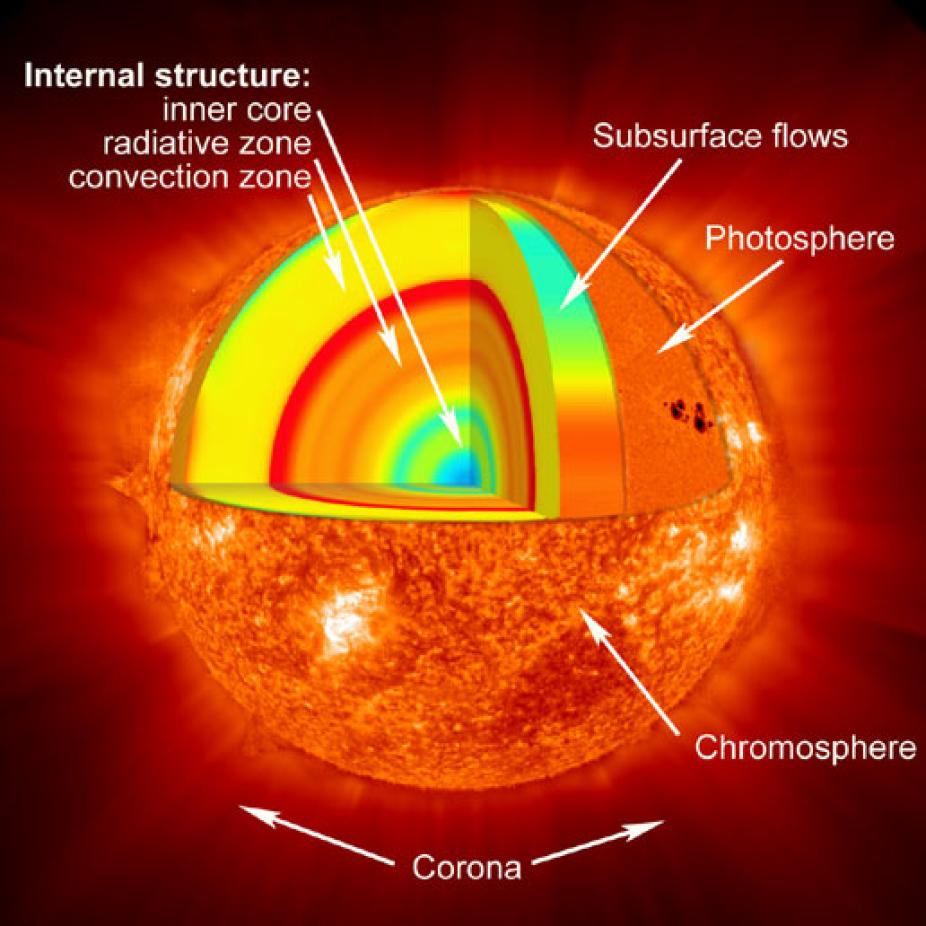What are the physical characteristics of the Sun?

Internal structure of the Sun.
NASA
What we see as the surface of the Sun, the photosphere, has a temperature of about 5780 K. The interior of the Sun probably has a temperature around 16 million K, and the extended outer atmosphere of the Sun, the solar corona, has a temperature around 2 million K. Between the photosphere and the corona is a layer called the chromosphere. It is in this region where most of the temperature rise from the surface to the corona takes place. The rapid heating from the surface of the Sun to the chromosphere, and then of the corona, is one of the very interesting problems in solar physics. Especially since most of this change occurs in a distance of less than 200 km!
In terms of the number of atoms, it is made of 91.0% hydrogen and 8.9% helium. By mass, the Sun is about 70.6% hydrogen and 27.4% helium. In much smaller amounts, the Sun also contains oxygen, carbon, nitrogen, magnesium, neon, iron, sulfur, aluminum, calcium, sodium, nickel, and argon.
The diameter of the Sun is 1.4 million kilometers, and is about 150 million km away from the Earth. In contrast, the diameter of the Earth is 12735 km, about 1/100 the size of the Sun.
The Sun's age is estimated to be around 4.5 billion years. It should remain more or less as it is for another 5.5 billion years, although it will continually be undergoing changes as it consumes its fuel through fusion.